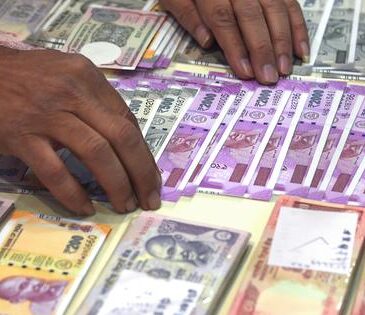RECENT headlines have been rife with speculation about the demise of the US dollar, fuelled by its 10 per cent decline since the start of 2025 and the US’ shifting stance on global trade, marked by increased tariffs. Some voices are even suggesting that US exceptionalism is over and that the greenback will soon be replaced, with global investors dumping US assets. However, this, in our opinion, is simply fearmongering.
Rise of Asian currencies: A temporary phenomenon
One of the major factors fuelling this theory is the sharp appreciation of several Asian currencies lately. The Bloomberg Asian dollar index appreciated 3.8 per cent at one point since Donald Trump’s “Liberation Day” in early April. This led to a mad rush among Asian investors and exporters to hedge against the USD decline, creating a self-fulfilling prophecy that exerted depreciating pressure on the dollar.
Yet, it’s important to recognise that this episode of sudden dollar depreciation is a wake-up call for investors and exporters to consider a foreign exchange hedging strategy for their portfolios and business-related concerns. Having a hedging plan is especially crucial for those with US asset-heavy investment portfolios or exporters who receive payments in USD.
Resilience of the US dollar
The US dollar has long been the world’s pre-eminent currency, serving as the backbone of international trade, finance and economic stability. Its dominance is evident in its widespread use in global transactions, the foreign exchange reserves of central banks, and its role in commodity pricing, particularly oil. The dollar’s journey to global dominance began in the aftermath of World War II with the establishment of the Bretton Woods system in 1944, which pegged major currencies to the dollar. Although the system collapsed in 1971, the dollar retained its central role in the global economy.
Today, despite naysayers and doomsday proponents of “why is the world lending money to an essentially bankrupted US”, the greenback still accounts for around 60 per cent of global foreign exchange reserves and is involved in nearly 90 per cent of forex trading. It has further solidified its dominance in the SWIFT global payment system since the Covid-19 pandemic, rising from 38 per cent of all transactions to nearly 50 per cent now, cementing its top position as the most used payment currency. In comparison, the euro is in a distant second place with 22 per cent, the British pound ranking third at 6.6 per cent, and the renminbi ranking fourth at 4.1 per cent. Additionally, the dollar is the primary currency for international debt issuance and the standard for pricing key commodities, including oil and gold.
Challenges to US dollar dominance: Overstated risks
Despite the dollar’s strong position, several risks are often cited as challenges to its dominance. Geopolitical shifts, such as the rise of China and its efforts to internationalise the renminbi, pose potential threats. China has established currency swap agreements and promoted yuan-denominated commodities trading, which could gradually erode the dollar’s dominance. However, these efforts have yet to make a significant dent in the dollar’s supremacy.
Technological advancements, changes in global trade dynamics, and inflation concerns are also frequently mentioned as risks. However, the size and stability of the US economy, the liquidity and depth of US financial markets, and the political and military influence of the United States provide a strong foundation for the dollar’s continued dominance.
The US dollar is still here to stay
While the greenback faces challenges, its deep-rooted position in the global financial system and the strategic actions taken by the United States will likely ensure its continued dominance for the foreseeable future. The recent fears of the dollar’s demise are exaggerated and do not reflect its resilience and underlying strengths. Investors and businessmen should remain vigilant but confident in the dollar’s enduring role as the cornerstone of the global economy.
The writer is chief strategist, Asia, at Indosuez Wealth Management, the global wealth management brand of the Credit Agricole Group




